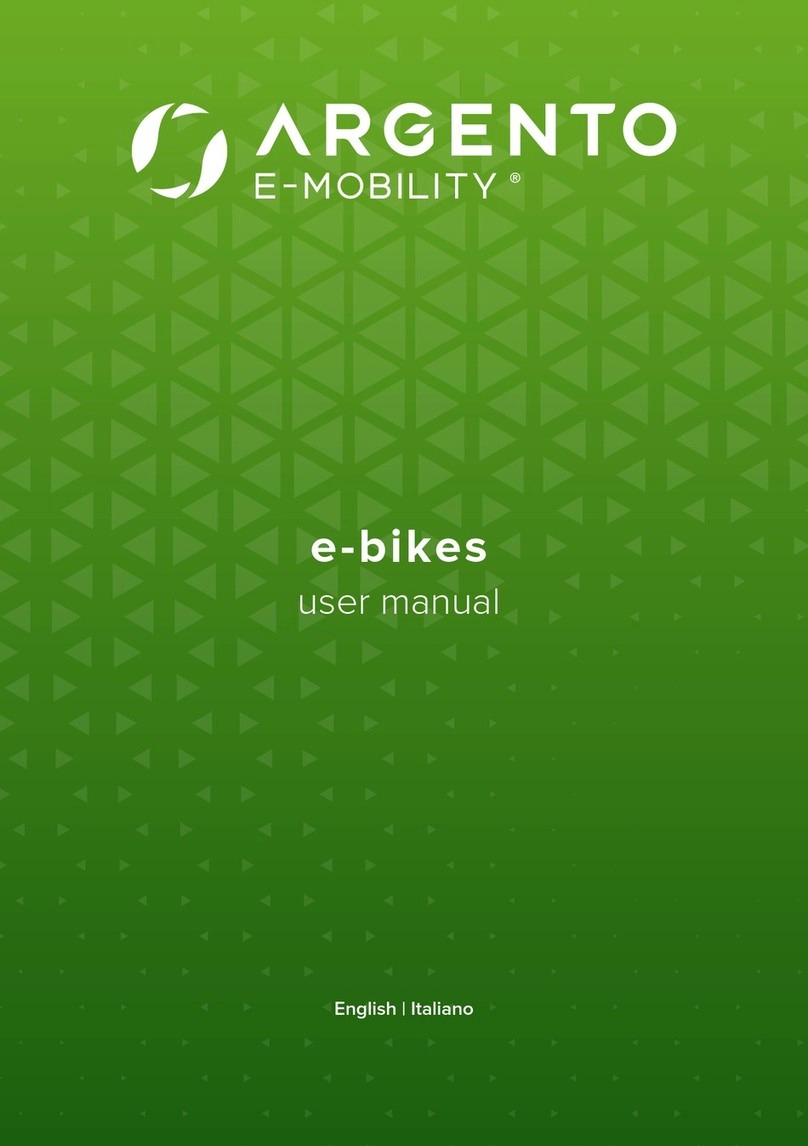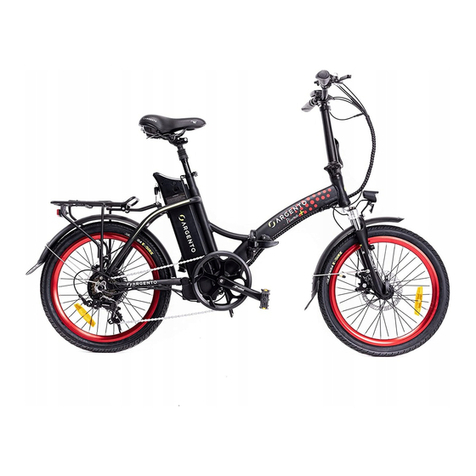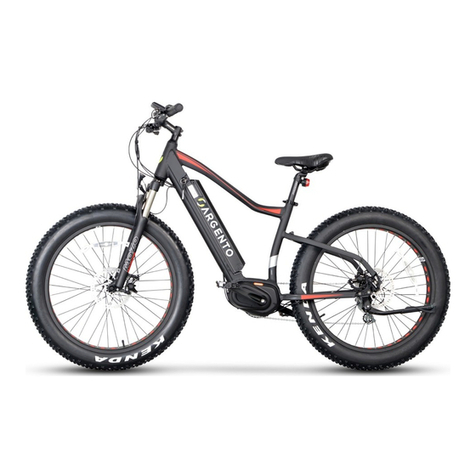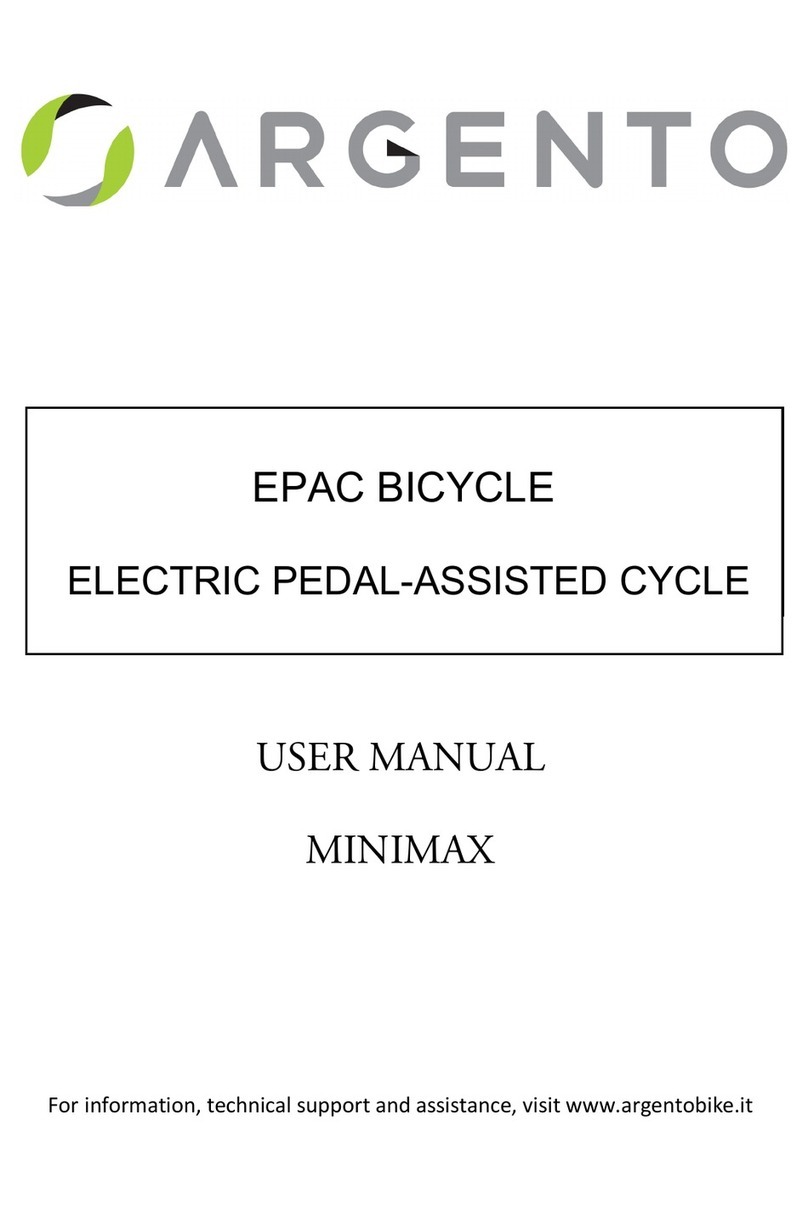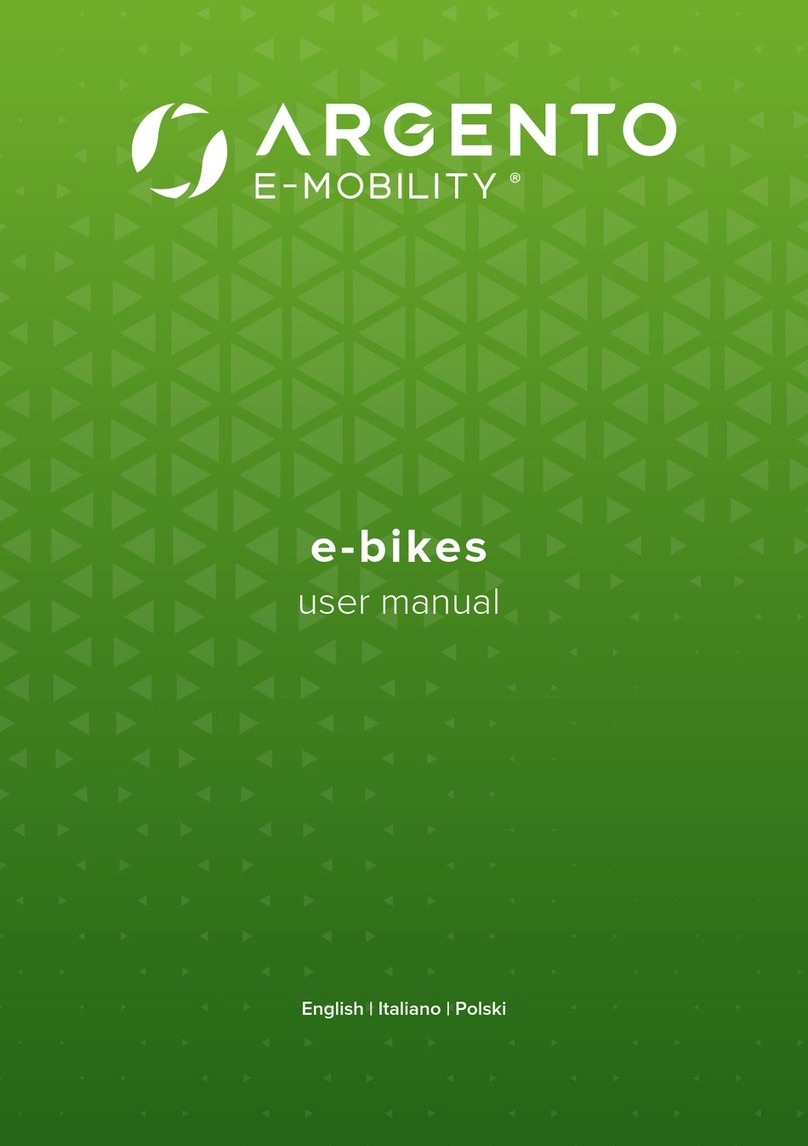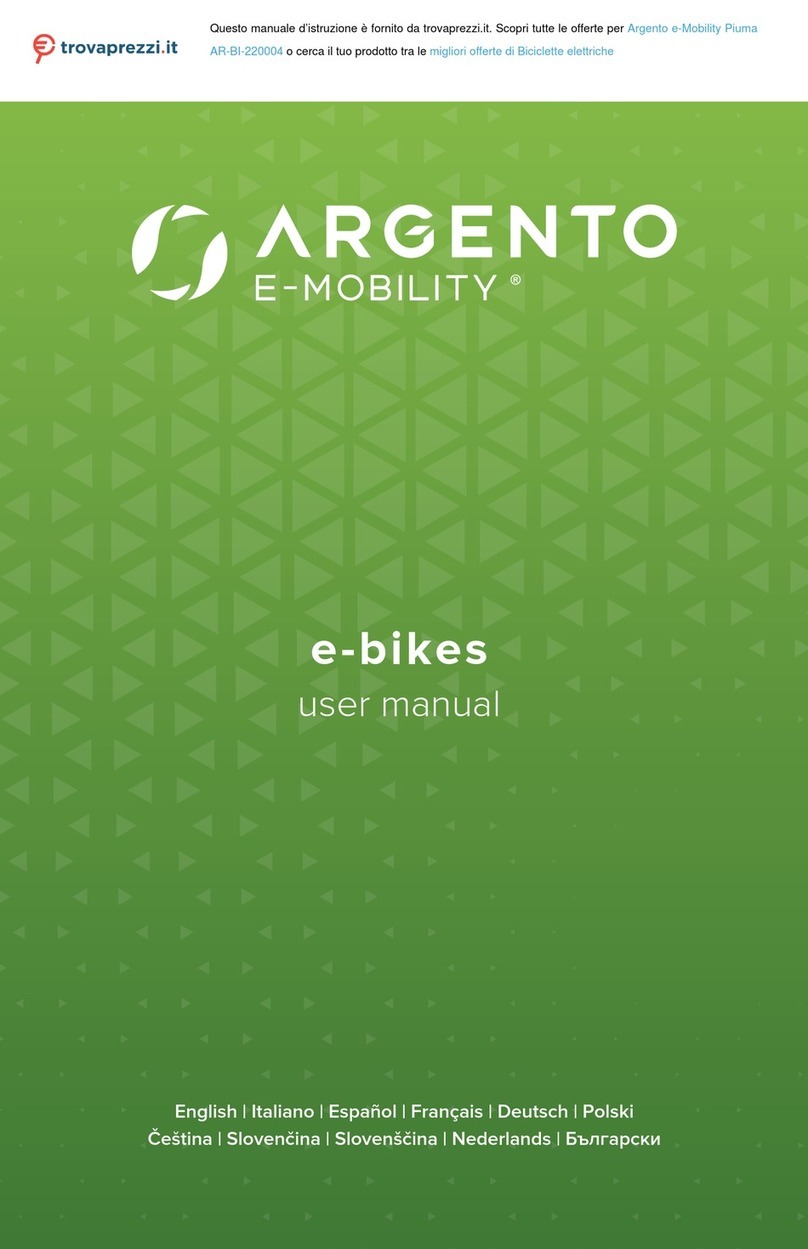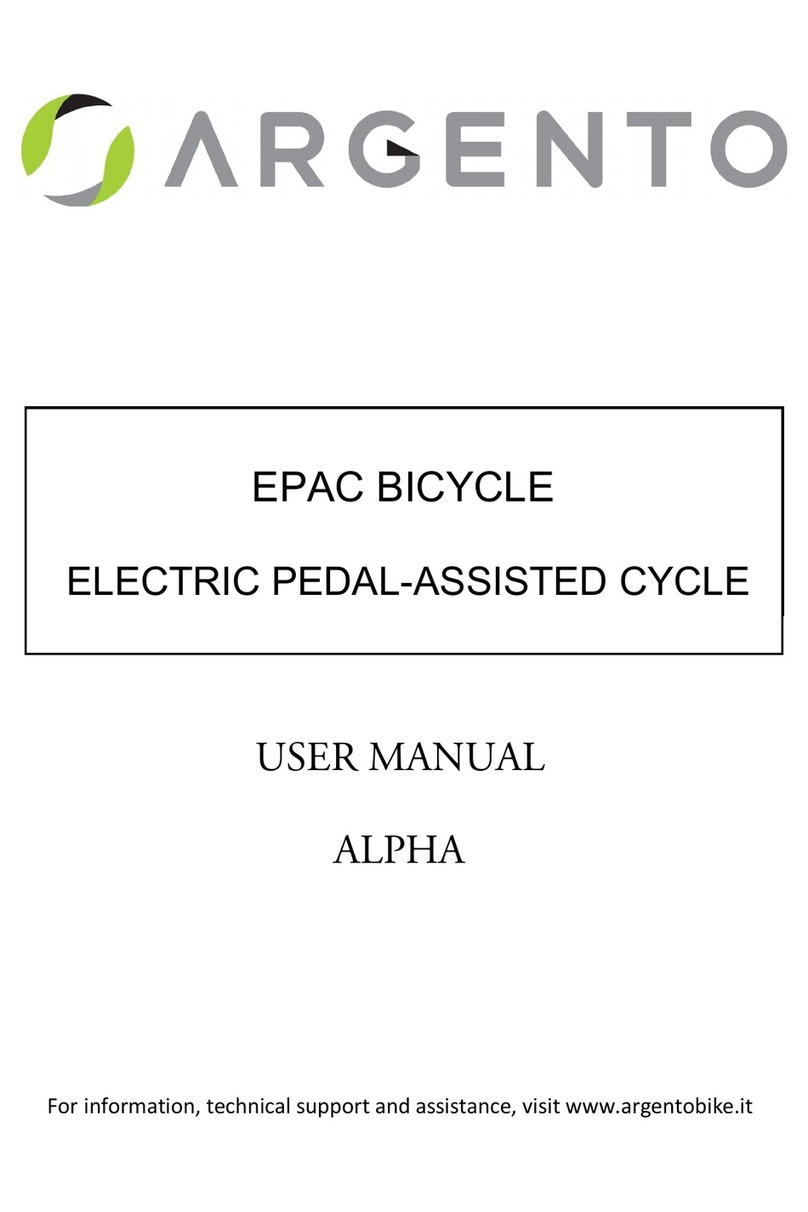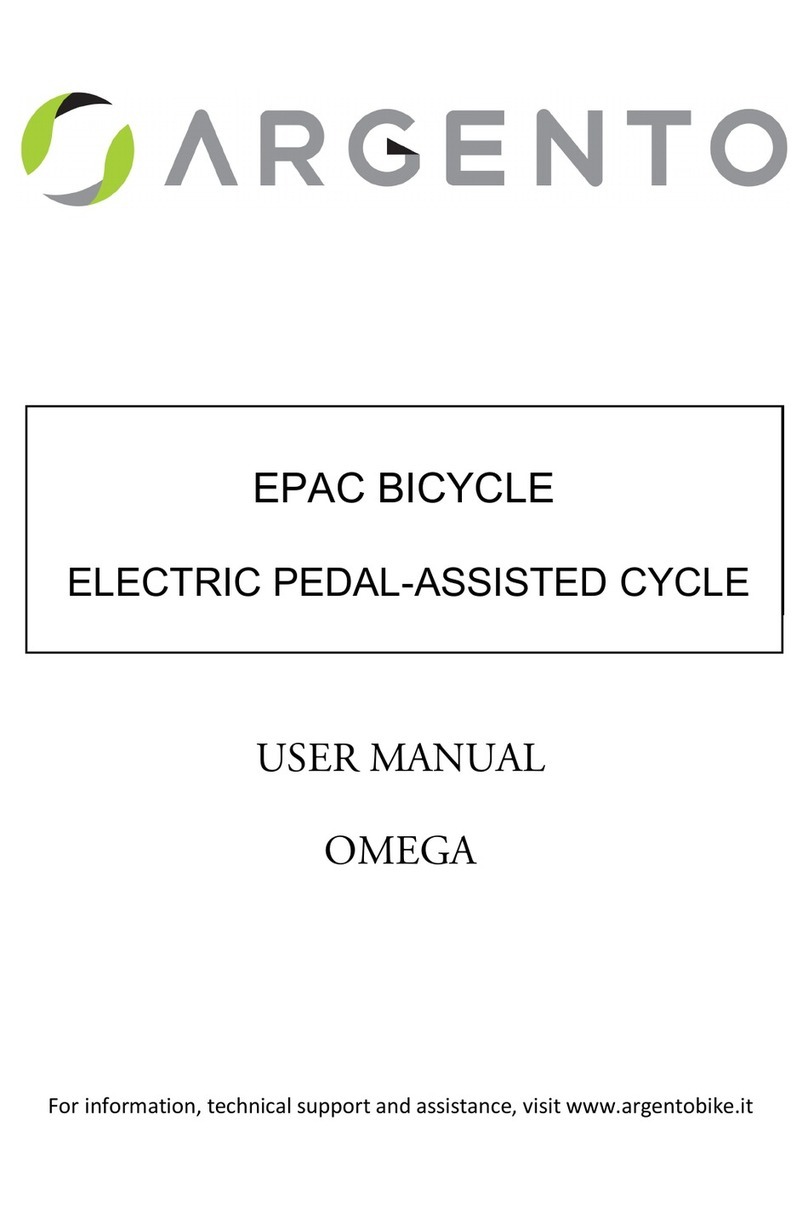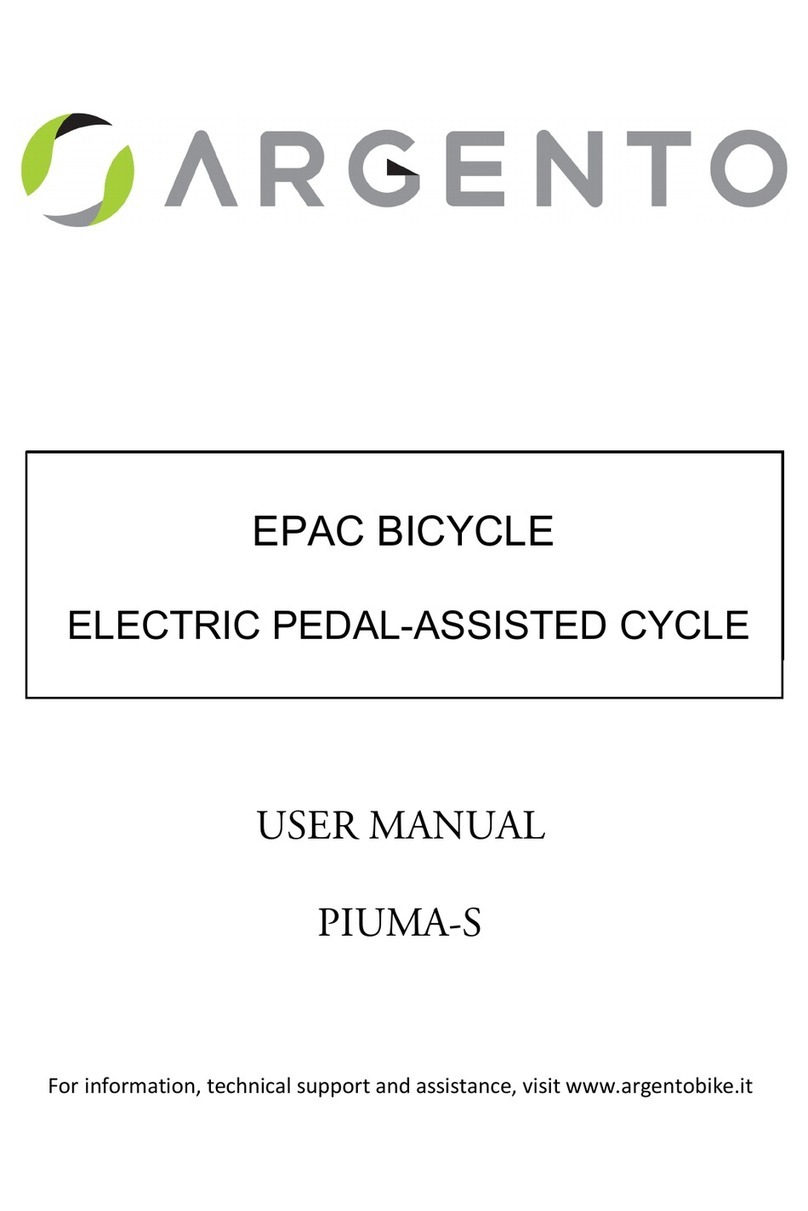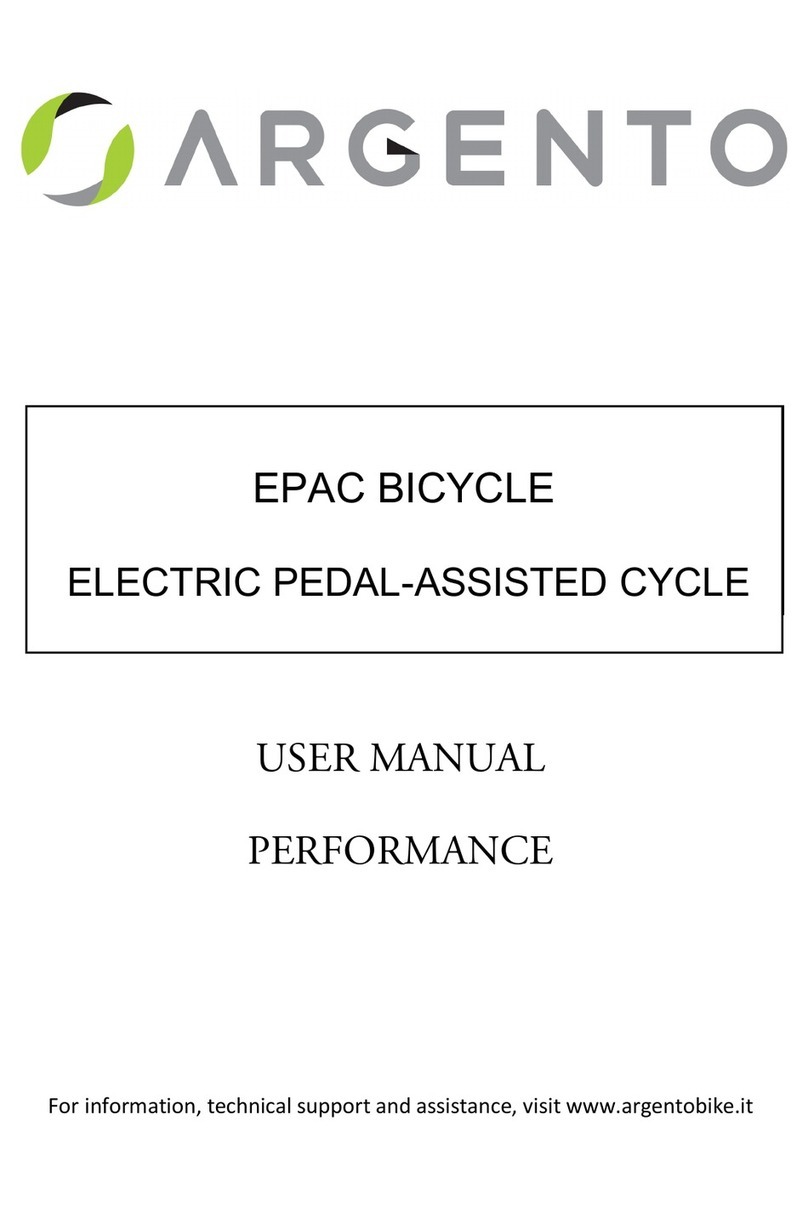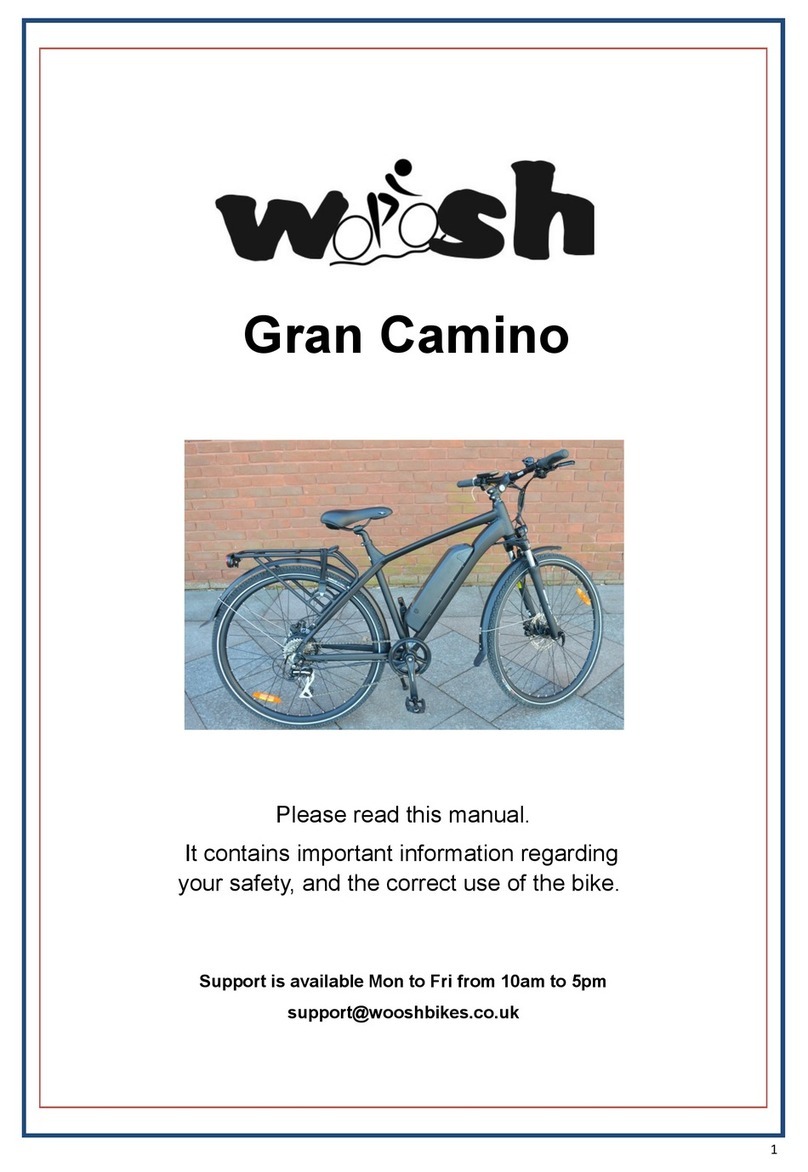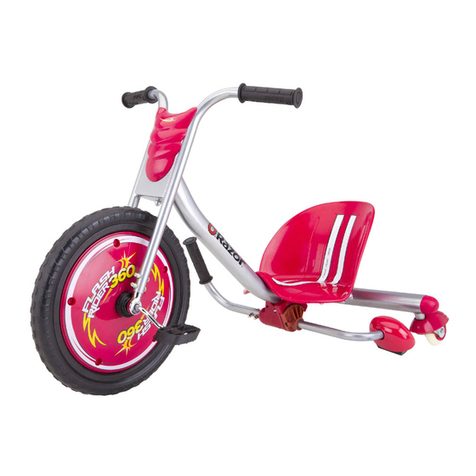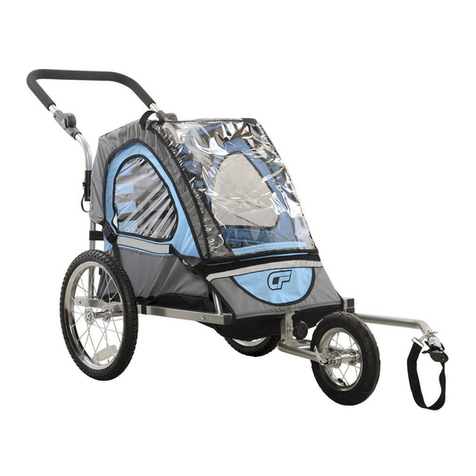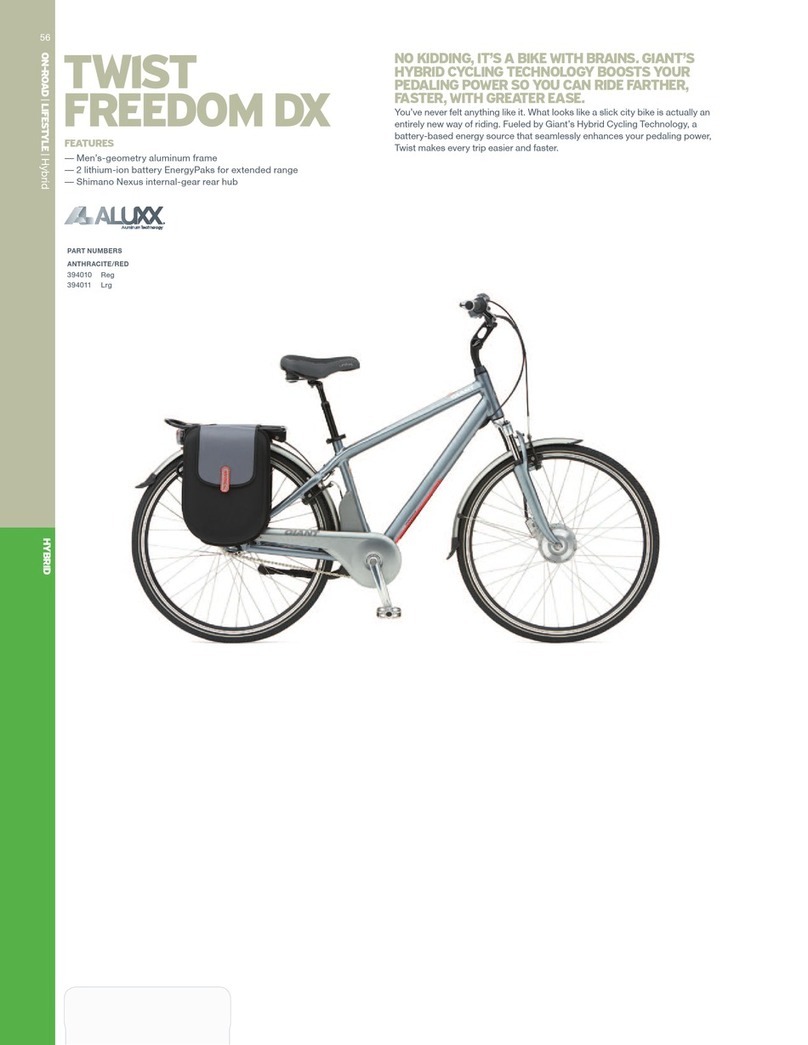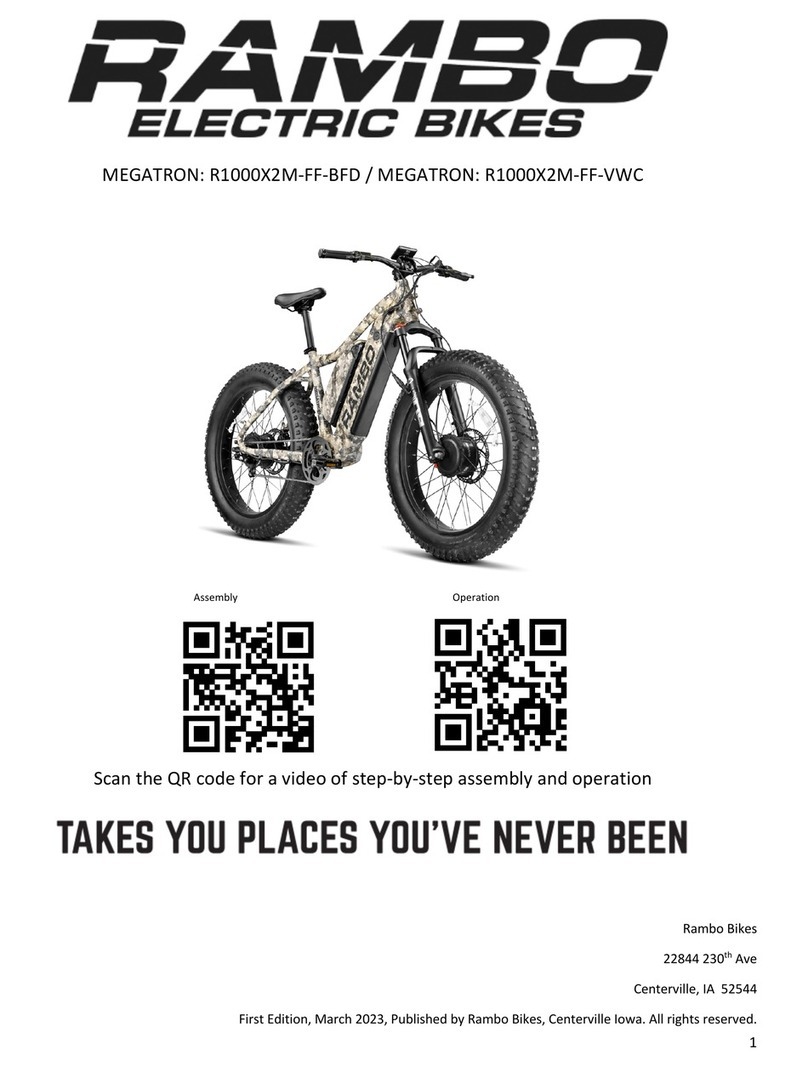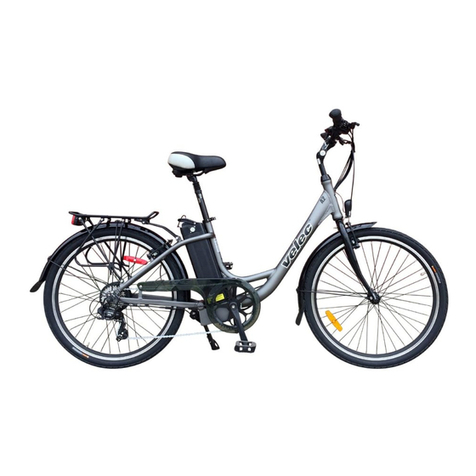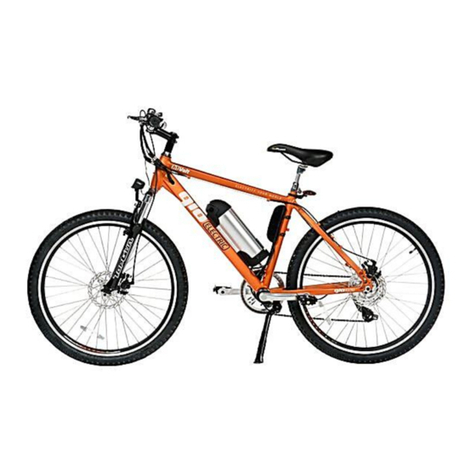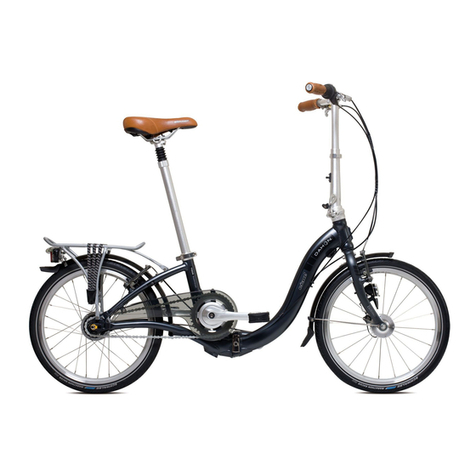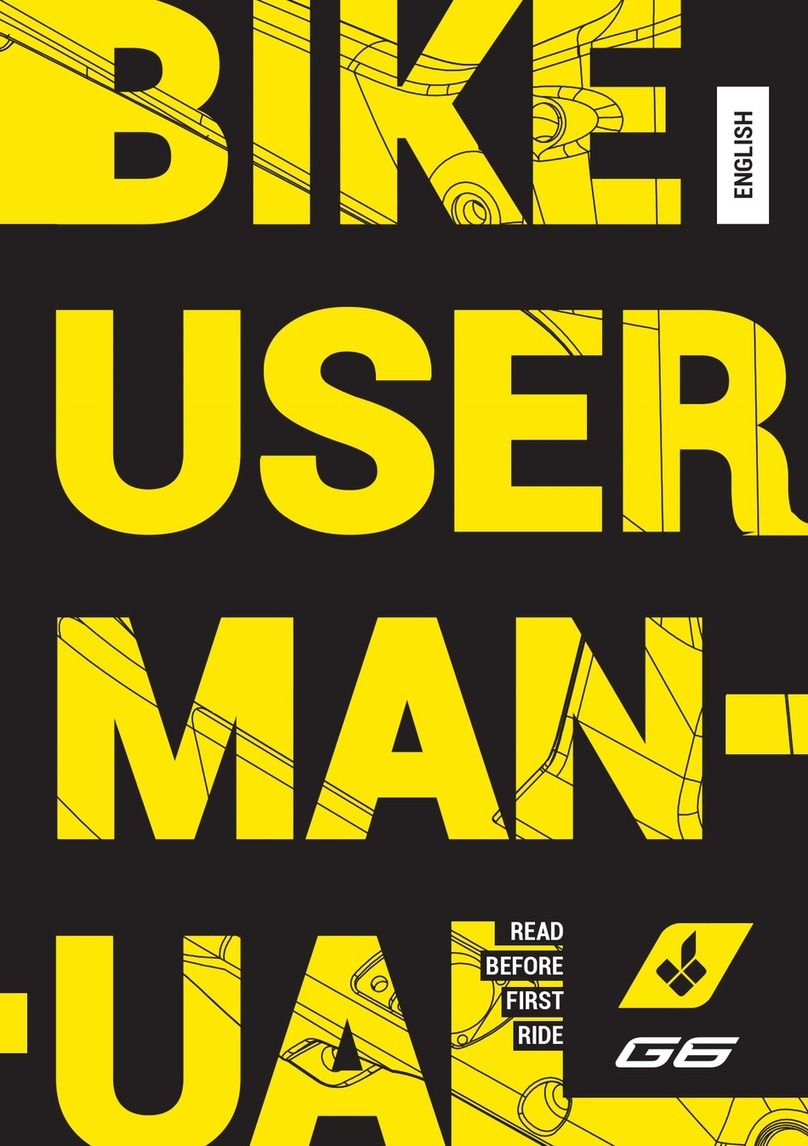
08
Conditions of use
The EPAC has been designed and manufactured to be ridden outdoors, on public highways
and cycling paths, but always on tarmacked surfaces.
Any modification of the construction can compromise the behaviour, safety and stability of
the EPAC and may cause an accident.
Any other type of use, or extension of use beyond the one intended, does not correspond
with the purpose attributed by the manufacturer and, therefore, the manufacturer shall not
assume any responsibility for any damage resulting thereof.
The battery life and, thus, the related estimated distance travelled in km, may vary
significantly depending on the type of use and external factors. The following factors may
be particularly significant: weight of user, pedalling frequency, level of assistance selected
on the display, average speed, thickness and wear of the tread, road gradient and surface,
weather conditions.
Place of use
The EPAC can be used outdoors when there are no adverse weather conditions (rain, hail,
snow, strong wind, etc.).
Maximum temperature allowed: +40°C Minimum temperature allowed: +0°C Maximum
humidity allowed: 80%
The EPAC must be used in a place with a flat, compact, smooth, tarmacked surface, with no
potholes or depressions, free from obstacles and patches of oil.
The place must also be illuminated by the sun or artificial light to guarantee correct visibility
of the route and the EPAC controls (300 to 500 lux recommended).
Forbidden places of use
The EPAC should not be used:
• in areas at risk of fire or explosion;
• in corrosive and/or chemically active environments; in poorly lit environments;
• on ground with a gradient of more than 10%; on uneven or non-tarmacked surfaces.
WARNING
